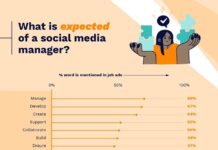I’ve long been a fan of the idea that you can use the information that a customer shares with you on the realtime web to then deliver value to that customer. It’s one of the key principles of realtime marketing, and the subject of the article I wrote for the first issue of The Social Media Monthly, How to Use Realtime Marketing To Deliver Value to the Right Customer at the Right Time.
But this weekend Toyota came under fire for attempting to do this by using automated tweets, responding to hashtags, in a way that was perceived as spam. Now Walgreens is planning on using the same technology from a startup called LocalResponse that Toyota used in its campaign to send messages to customers using mobile apps to check in at its stores.
Will the Walgreens campaign be more successful?
According to AdAge, Walgreens will monitor public check-ins at its stores and then sends users reply messages via Twitter. For example, when customers check in to a Walgreens via an application such as Foursquare or Yelp, and then publishes that check-in to Twitter, they might receive a message back from Walgreens with an in-store promotion. VatorNews published a great graphic last December describing the process in detail.
Walgreens isn’t new to check-in promotions. Last fall, it offered customers who checked in via Foursquare the opportunity to donate free flu shot vouchers to their choice out of five national charities. vouchers to flu shot. For Energizer, Foursquare check-ins at Walgreens served up a mobile coupon for a four-pack of batteries. But Walgreens is the first retailer to use LocalResponse to push deals or promotions, and it will be the only drugstore chain to use this feature for at least one year.
Walgreen’s Director of Social Media Adam Kmiec says that the brand has check-points in place to make sure that it is providing content that’s “relevant, appreciated and business-driving.” He looks for campaigns to meet the following criteria:
- Did the customer express an appetite for this type of content, as demonstrated by the team’s social monitoring and analysis platforms?
- Does this approach map back to the brand’s overall social strategy, which is built around realtime, local, personal and innovation?
- Pay close attention to the details of the execution: selecting an appropriate launch date and time, and how frequently to communicate.
- Monitor and analyzing the receptiveness to the program, and make adjustments as you learn from your customers.
That said, Kmiec is also careful to emphasize that Walgreens is an innovator–and innovation carries risks. Walgreens will be the only drugstore chain to use this feature for at least one year. “Being first may bring its share of learning pains, but it also allows us to create relationships that are exclusive and ultimately create a competitive advantage for us because our competition will be unable to work with A-Level partners like Local Response.”
LocalResponse CEO and co-founder Nihal Mehta told me that the company will be releasing best practices for brands using its platform at its official launch next week.
It seems to me that the Walgreens check-in program is far more targeted, and reaching customers at a time when they are in a mind-set to buy with a message that is likely to be perceived as adding value to the shopping experience–whereas Toyota was messaging customers who were settling in with their friends to watch football.
What do you think? Can an automated realtime messaging platform like LocalResponse be effective if the messages are targeted enough? Or do you think automated messaging is always a bad idea?


